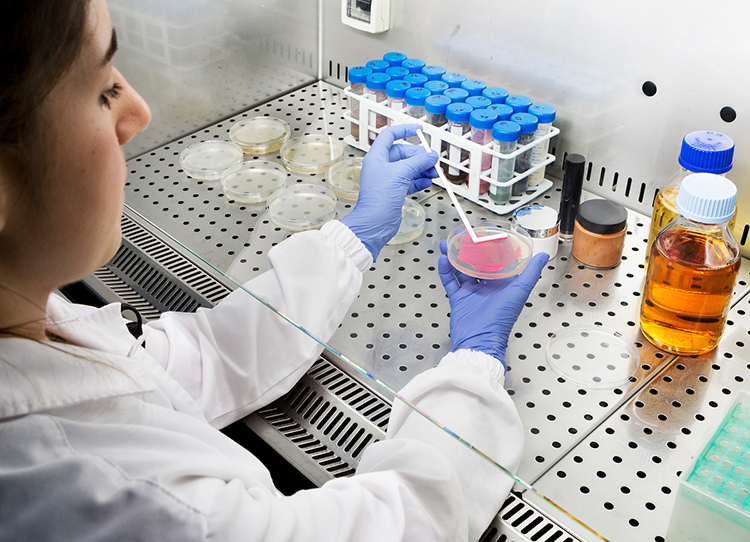- All categories
- Cosmetics
- Medical devices
- Biocidal products
- Detergents
- Food supplements
- Medical surgical devices
- Hazardous mixtures
- E-Cigs, E-liquids
TOTAL MICROBIAL COUNT Enrichment
Cosmetic product shall be characterized by a limited presence of micro-organisms, therefore we perform research of bacteria, yeasts and molds and assess the absence of microbial growth after enrichment (absence of non-specific and specific (pathogenic) microorganisms).
TOTAL MICROBIAL COUNT + Pathogen research
The cosmetic product must be characterized by a limited presence of microorganisms. For this purpose, a search for bacteria, yeasts, and molds is conducted, and if contamination is found, a search (presence/absence) for pathogenic microorganisms is performed.
EVALUATION OF THE ANTIMICROBIAL POWER
The purpose of the test is to evaluate the antimicrobial efficacy of a cosmetic product against specific microorganisms (S. aureus, P. aeruginosa, E. coli, C. albicans, A. brasiliensis, S. epidermidis, M. furfur, etc.).
EVALUATION OF THE ANTIBACTERIAL ACTION ON PLASTICS AND OTHER NON-POROUS MATERIALS
The test allows for the evaluation of antibacterial action on plastics and other non-porous materials, using microorganisms (Escherichia coli, Staphylococcus aureus).
TEXTILES - DETERMINATION OF ANTIBACTERIAL ACTIVITY OF FINISHED ANTIBACTERIAL PRODUCTS
The test allows for the determination of the antibacterial activity of finished products (textiles), using microorganisms such as Escherichia coli and Staphylococcus aureus.
STERILITY TEST
The test allows checking the sterility of medical devices.
CHALLENGE TEST ISO
The Challenge Test allows for the verification of the microbiological stability of the tested sample over time (storage and use). The test involves contaminating the sample with standardized strains of microorganisms (bacteria, yeasts, and molds) and subsequently evaluating the variation in microbial load by plate counting (CFU/ml) of the number of viable microorganisms at defined time intervals. The microbiological stability of the sample is then verified based on the observation of the reduction in microbial load of the individual microorganisms within a specific time frame, according to specific acceptability criteria.
CHALLENGE TEST Pharmacopoeia
The Challenge Test allows for the verification of the microbiological stability of the tested sample over time (storage and use). The test involves contaminating the sample with standardized strains of microorganisms (bacteria, yeasts, and molds) and subsequently evaluating the variation in microbial load by plate counting (CFU/ml) of the number of viable microorganisms at defined time intervals. The microbiological stability of the sample is then verified based on the observation of the reduction in microbial load of the individual microorganisms within a specific time frame, according to specific acceptability criteria.
CHALLENGE TEST CPCP
Challenge Test enables the assessment of the microbiological stability of a tested sample over time (storage and use). This test concerns the contamination of the tested sample with standardized strains of microorganisms (bacteria, yeast and mould) and the subsequent measurement of the microbial load variation by plate count (UFC/ml) of the number of living microorganisms at defined time intervals. Based on the observation of each microorganism’s microbial load decrease within a certain time interval, the microbiological stability of the sample is verified according to specific acceptability criteria.
In-Use Test
The purpose of the test is to obtain realistic information on the efficacy and stability of a cosmetic product’s preservative properties (in terms of microbial contamination) during the post-production phase and while in use by consumers. (Cosmetico/dm/integratori)
Environmental Monitoring
The test involves monitoring surfaces in workplace environments


